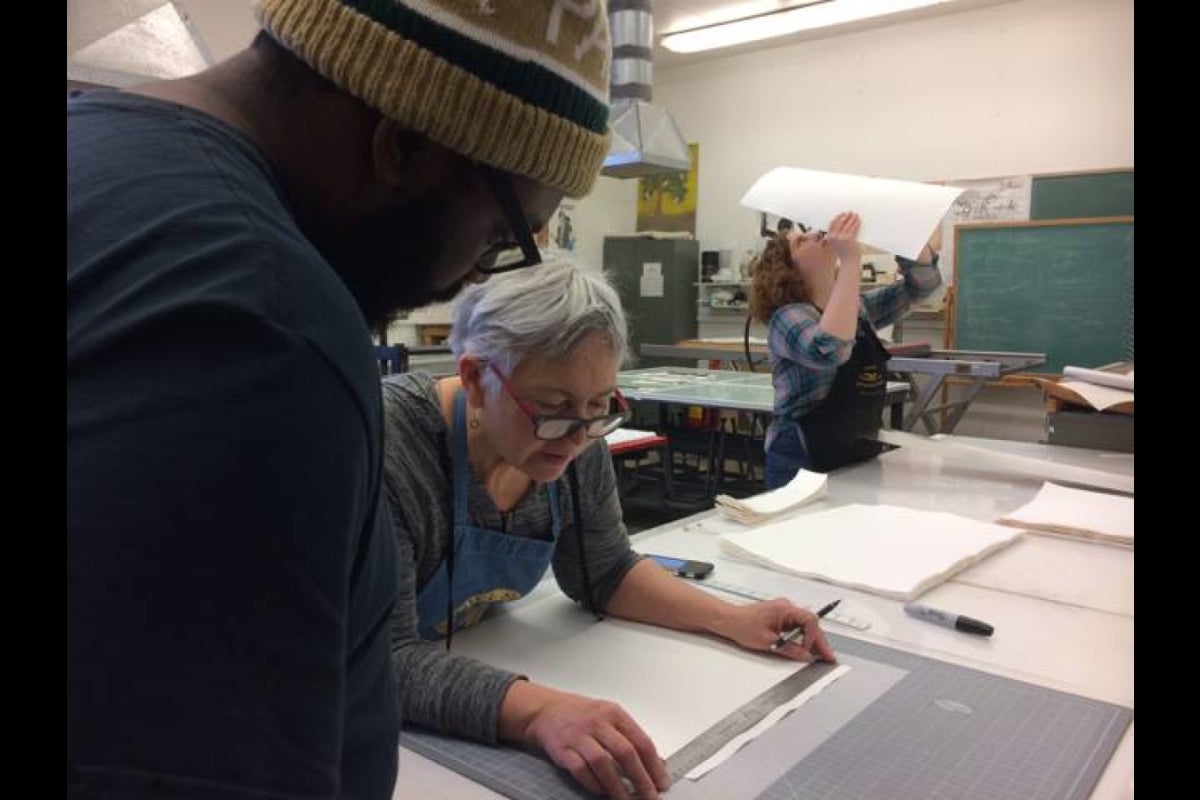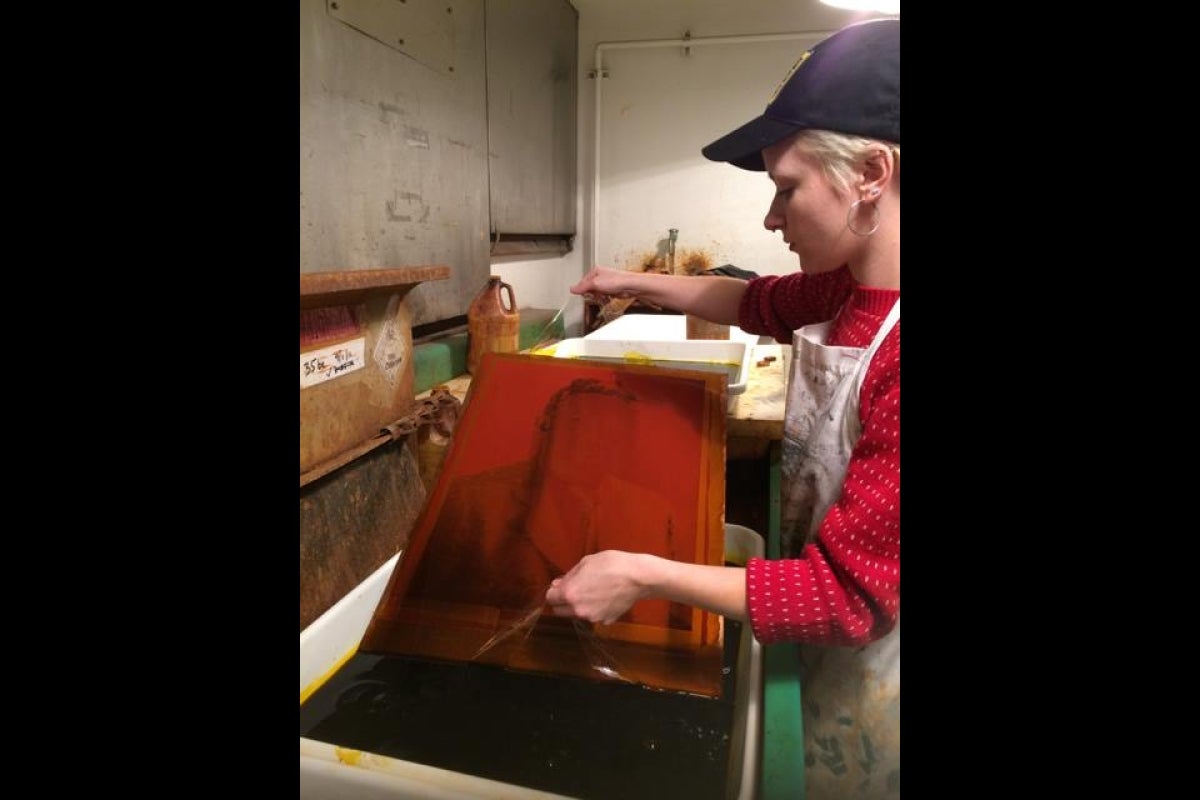Map(ing) exhibition at ASU Art Museum showcases the art of collaboration

Cannupahanska Luger's test prints hang to dry in ASU School of Art's printmaking studio. The final artwork is currently on view at ASU Art Museum.
“When we talk about mapping, we remember that anything we do is an overlay,” says Cannupa Hanska Luger.
Luger is one of the five professional artists who participated in this year’s Map(ing) project, a collaborative art-making endeavor founded by ASU School of Art professor Mary Hood.
Established in 2009, Map(ing) — Multiple Artists Printing (Indigenous and Native Geographies) — invites Native American and Indigenous artists from across the United States to work with students in ASU School of Art’s nationally ranked printmaking program to create editioned prints.
The twist? The invited artists are not printmakers.
Each artist works with a team of student printmakers (both graduates and undergraduates) over a 10-day time span to generate a piece of art in a medium that is brand new to them. The students effectively become the guides for these well-established artists.
“The project takes the learning out of the classroom,” says Hood. “The students are learning, and the students are teaching.”
In celebration of the 10th anniversary of the project, this year’s work is on display, alongside the pieces from earlier iterations of the project, in a six-month-long exhibition at ASU Art Museum.
“The exhibition is being presented within the context of our Spotlight series, highlighting faculty research and how these larger projects reflect their own artmaking, research and expertise, and their impact on student learning and experience,” says Heather Sealy Lineberry, senior curator and interim director at the museum.
This year was artist Sarah Sense’s second time participating in the program.
“I have never been pushed like Mary Hood has pushed me to explore new material,” she says.
Sense’s own artistic practice involves photography and traditional Chitimacha basket-weaving techniques, but she says some of the techniques she has learned through the project have become integrated into her regular art practice.
“When artists arrive, they become aware of possibilities they weren’t aware of before,” says Hood. “And it’s because of the student collaborators.”
Another of this year’s artists, Brenda Mallory, usually works in 3-D. Still, she says the print she created with her student collaborators maintains some through-lines with her sculptural artwork.
“It’s different from anything I’ve done, but it looks like my visual language,” Mallory says.
Artists and students are not restricted in terms of content. But much of the resulting artwork has to do with Native American and Indigenous culture and identity.
Artist Hannah Claus's work for the Map(ing) project is a recreation of one of the only surviving maps from a Cree guide. But, she notes, “ideas of memory, territory and narration come through in all of the work.”
Since the inception of Map(ing), ASU Art Museum has brought the resulting artworks into the collection, serving as an archive of the project. When the prints are not on display in the museum, they are housed in the museum’s Print Study Room, which is open by appointment to students, classes and the public for close study of the work.
“It was obvious from the panel discussion that opened the exhibition that the teams develop a tremendous rapport and that it is really a two-way process of sharing,” says Sealy Lineberry. “Both the artists and the students gain a great deal from the project.”
Map(ing) will be on view at ASU Art Museum through June 17. For more information, visit asuartmuseum.asu.edu.
More Arts, humanities and education

ASU student finds connection to his family's history in dance archives
First-year graduate student Garrett Keeto was visiting the Cross-Cultural Dance Resources Collections at Arizona State University…

ASU alumna makes her way back to the ASU Gammage stage for '¡azúcar!'
As the Los Angeles-based CONTRA-TIEMPO dance group prepares for its upcoming production “¡azúcar!” at ASU Gammage, for one member…

ASU FIDM professor wins international award for fantastical, sustainable creation
The horror of an ailing Earth inspired an Arizona State University fashion professor to create a fantastical garment out of…

